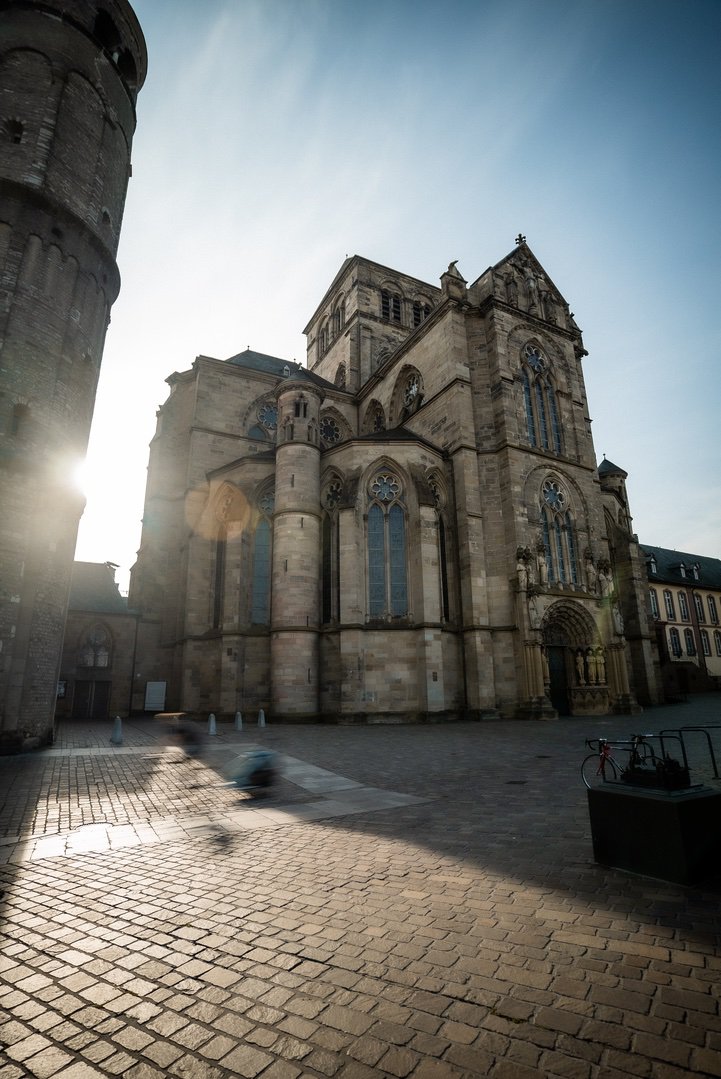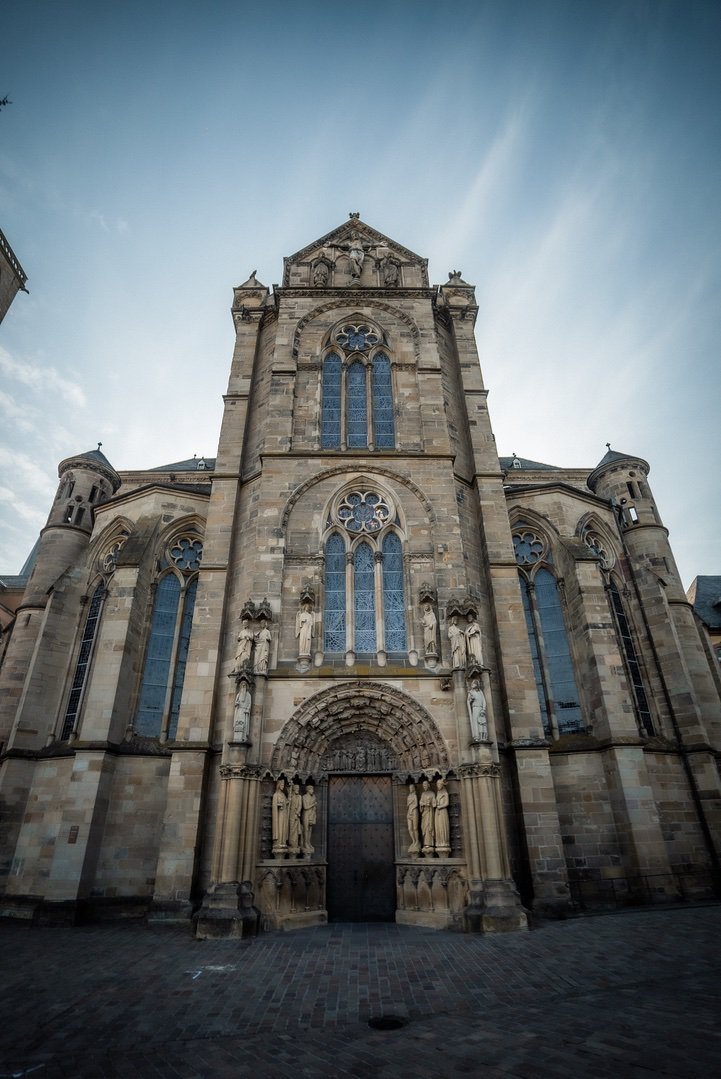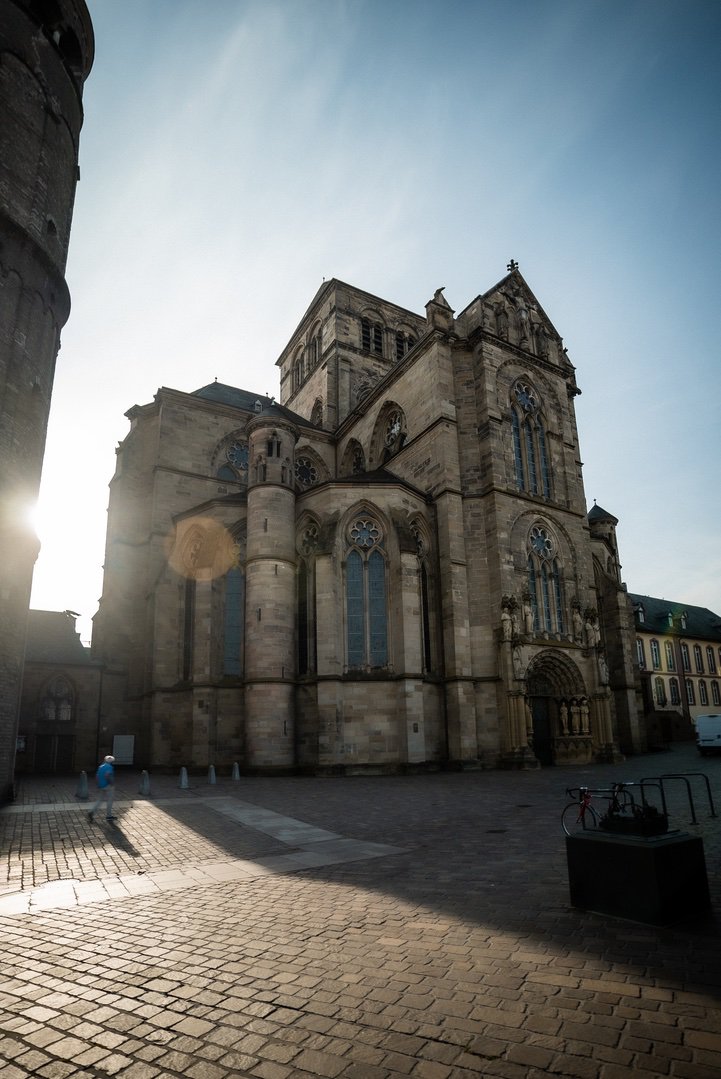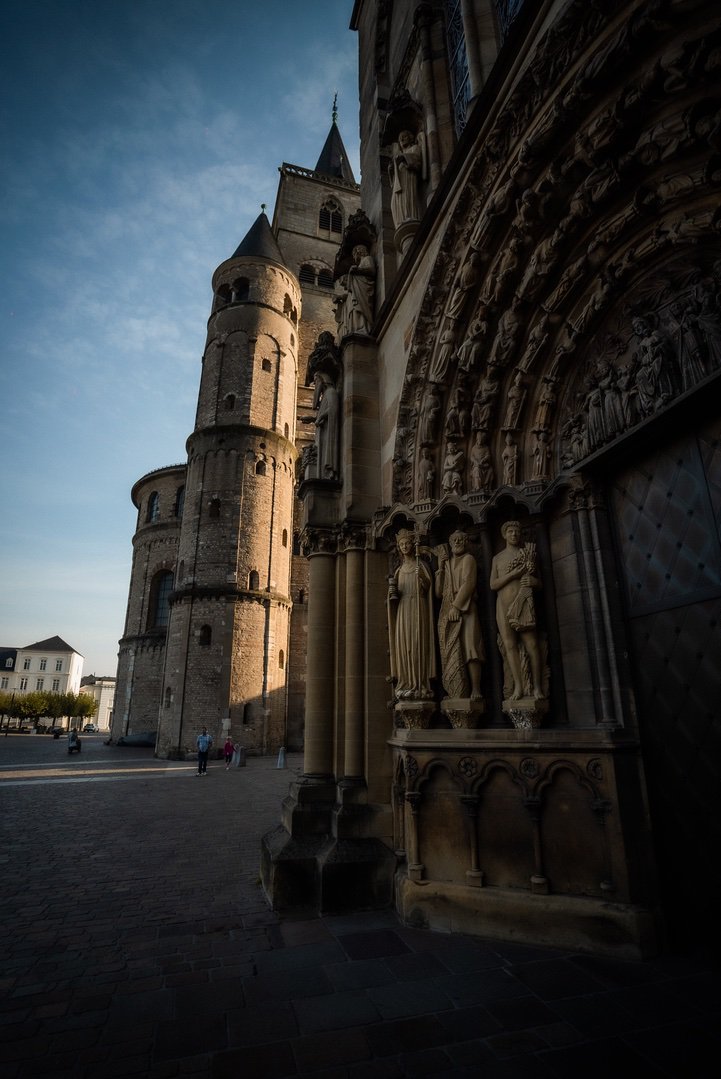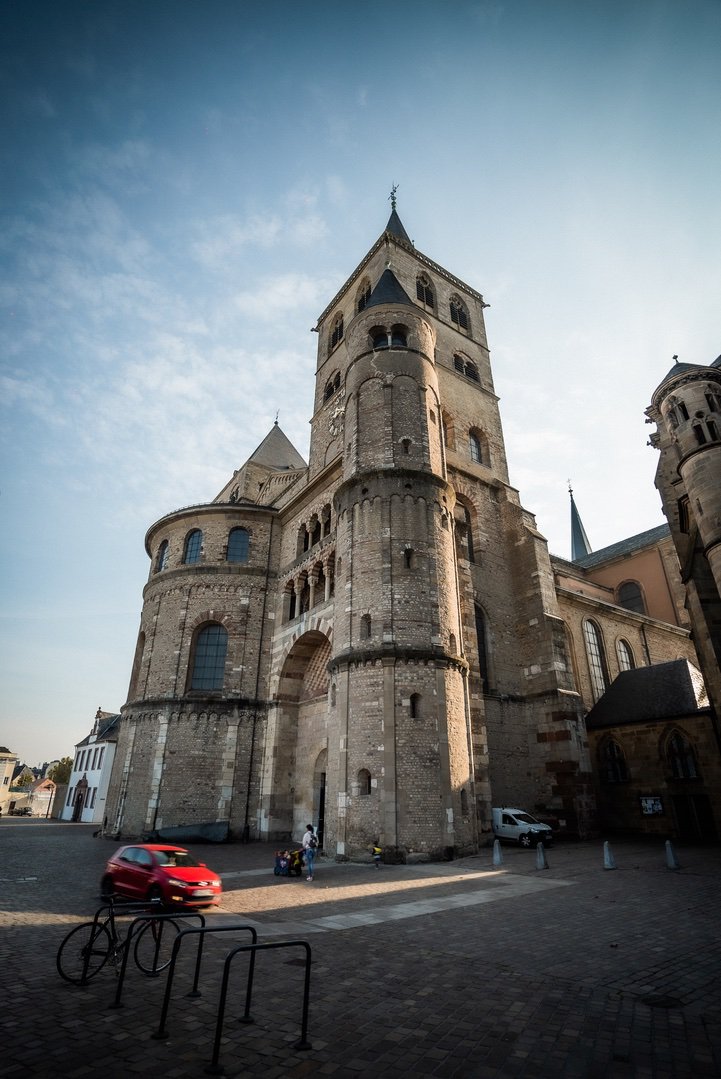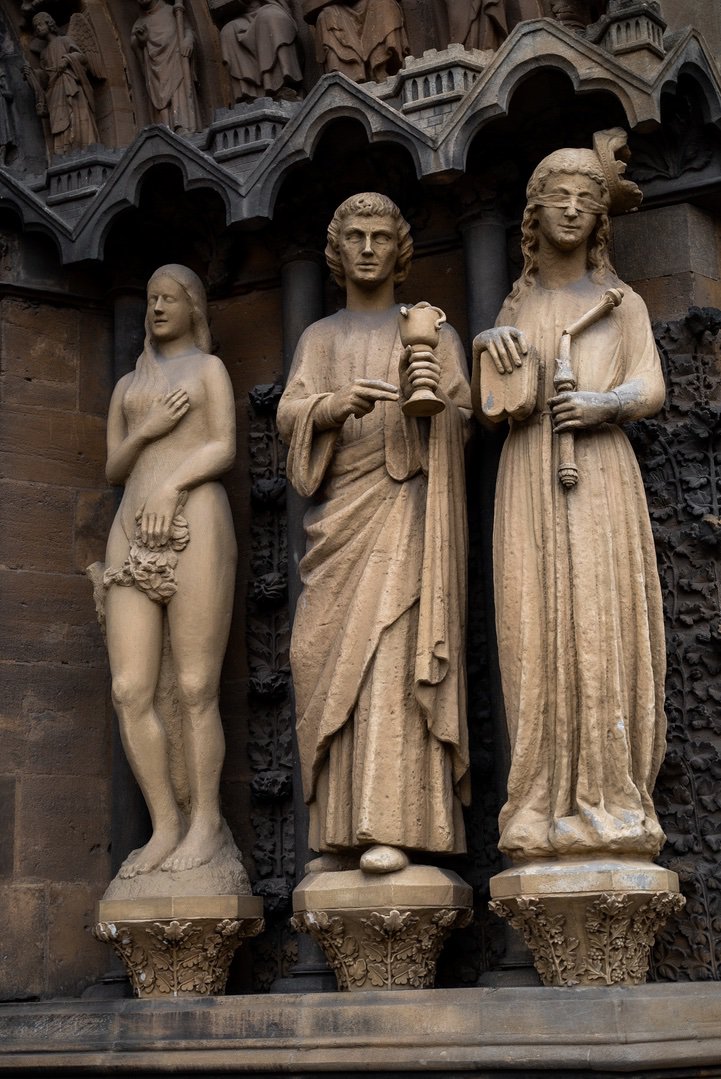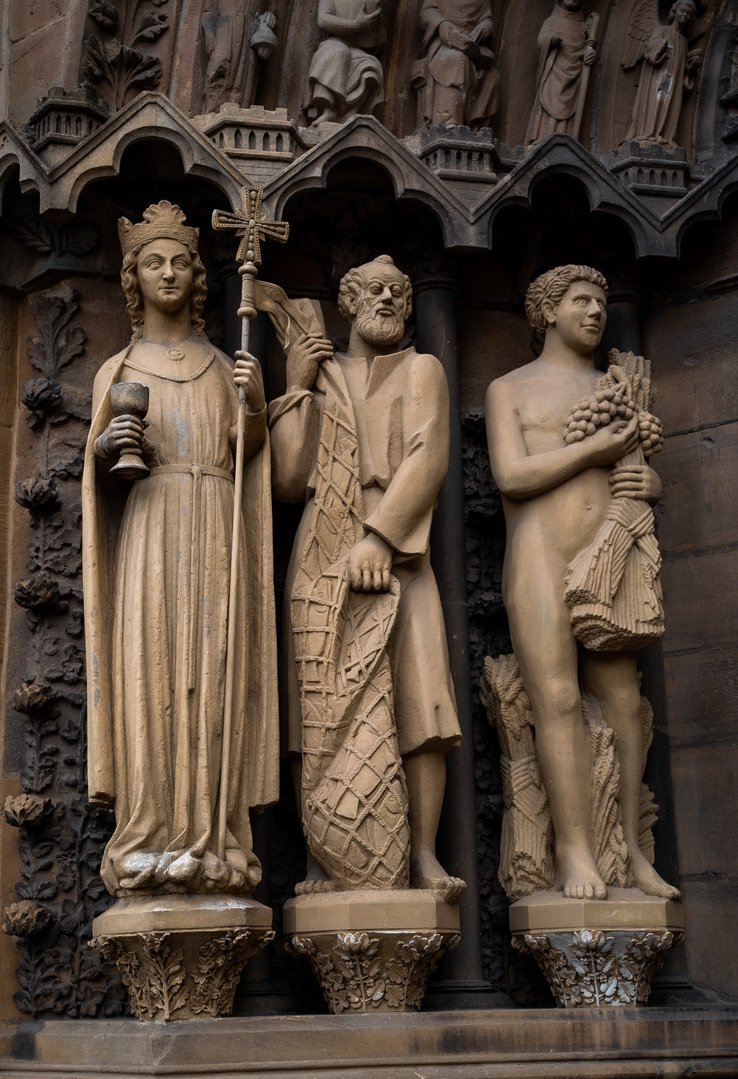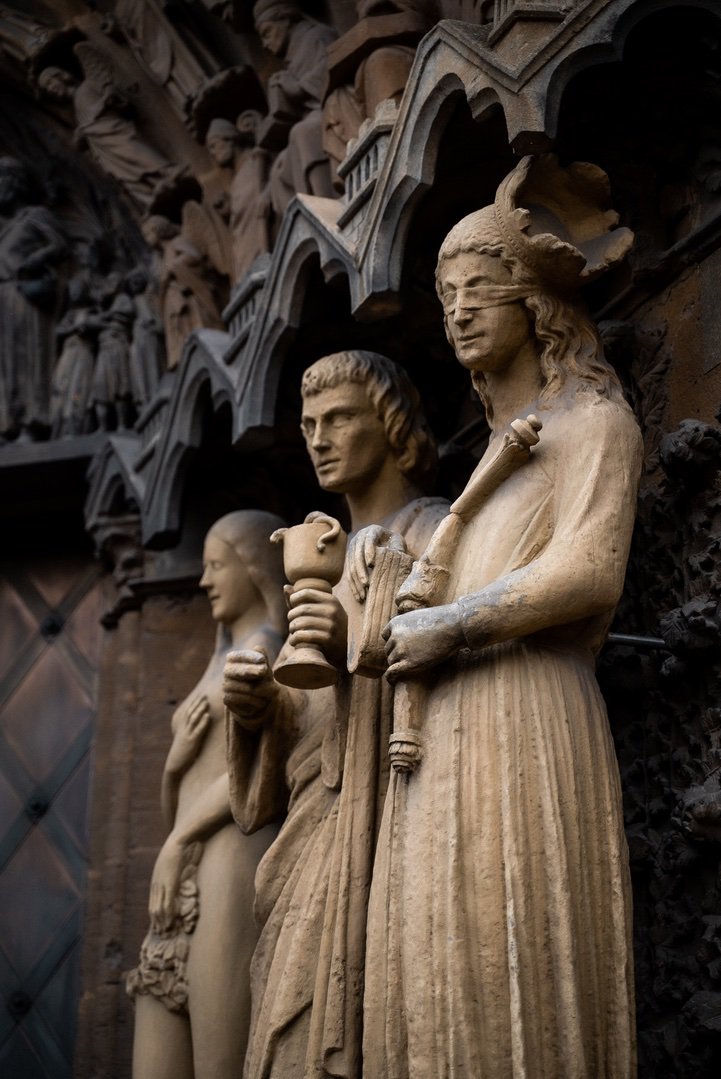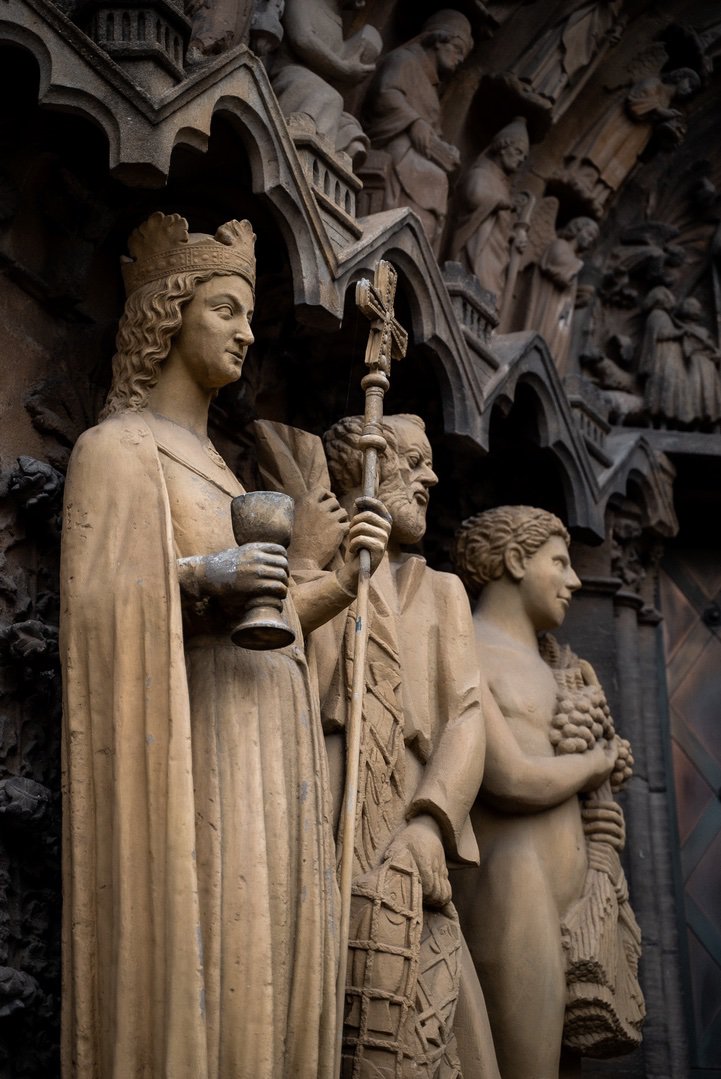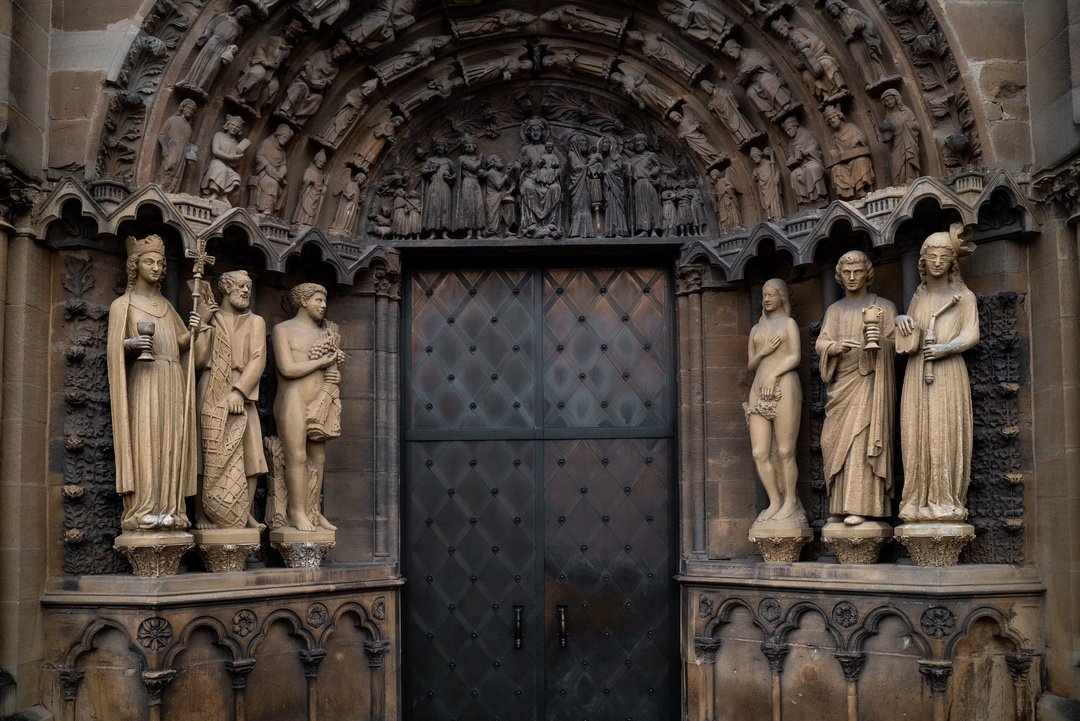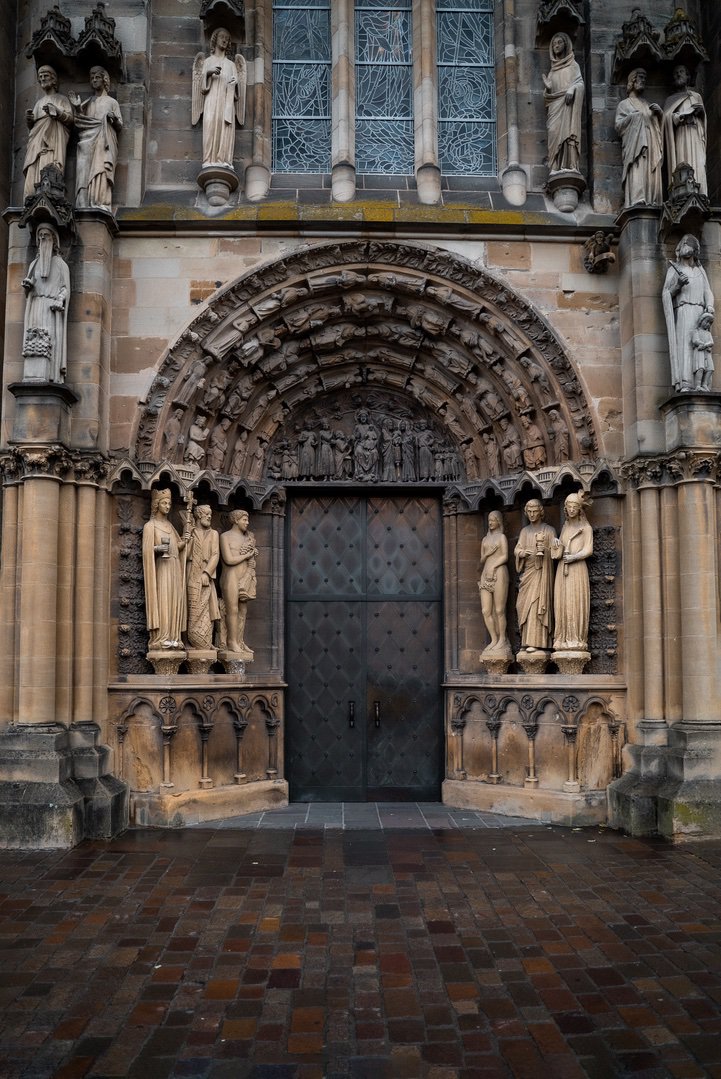Liebfrauenkirche
The Liebfrauenkirche in Trier was built in the early 13th century, making it one of the oldest Gothic churches in Germany. The builders came from the cathedral hut in Reims and brought with them a new style of architecture, spectacular at the time, in which church building was seen as a reflection of the divine order, as theology translated into stone.
The figure programme also includes Ekklesia and Synagogue as personifications of Church and Judaism. Ekklesia is depicted as a proud, beautiful woman, upright, with her head raised. She wears a crown as a sign of her dominion, a cross as a symbol of Christianity and a chalice as a symbol of the New Covenant. Synagogue, on the other hand, has her head bowed, her eyes are blindfolded, because - according to the Christian reading - she has not recognised the Messiah. The crown slips from her head, her sceptre is broken. The tablets of the law, symbol of the Old Covenant, she holds upside down, they seem to slip away from her. Even though both figures are beautiful, young and dignified, it is clearly expressed: the synagogue has had its day, its time is up, the "new Israel" is now the church. The medieval viewer may have drawn the fatal lesson from this that Judaism had lost its raison d'être.
The period in which these figures were created was a relatively unpressured time for Jews in this country after the Crusade pogroms, but latent anti-Judaism was on the rise. A statement of Christian superiority placed in such a prominent position also served as a visual lesson. Locals, but also traders, pilgrims and travellers passed by here every day, and this image was shown to them all. This motif is not unique to Trier, but can also be found on other churches of the time. Even if they differ in details, they have one thing in common: Christian superiority is depicted and justified theologically, Jews are assigned a subordinate place in society.
Images reflect and shape the thinking of people in their time. Negative images like these can poison the social climate and prepare the ground for concrete acts. Around 50 years after these figures were created, persecution of Jews again occurred on the Moselle and Rhine, and around 100 years later the great plague pogroms took place throughout the Reich - including in Trier.
Author: Bettina Hein
Editorial staff: Prof. Dr. Frank G. Hirschmann
